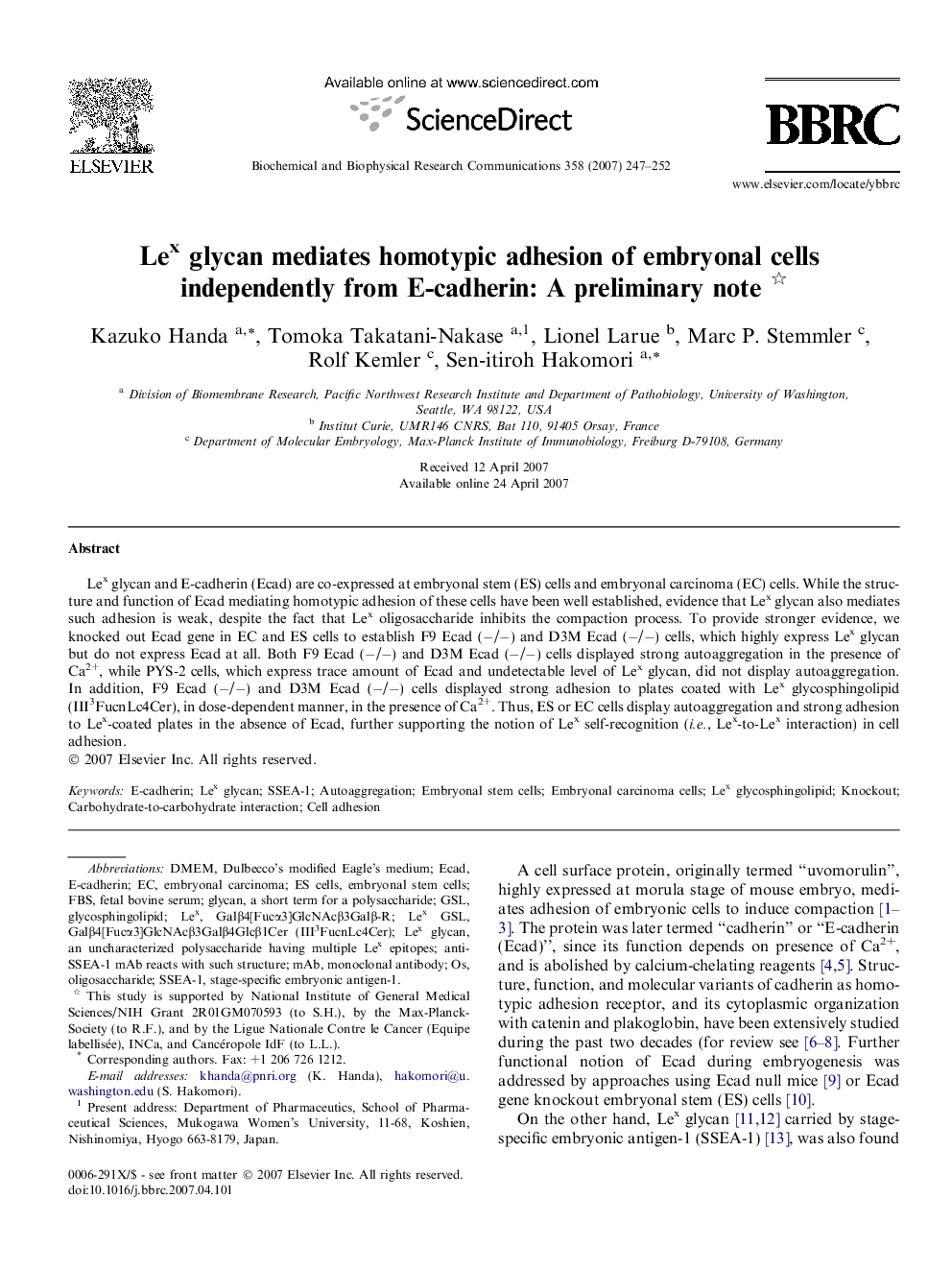| Article ID | Journal | Published Year | Pages | File Type |
|---|---|---|---|---|
| 1938263 | Biochemical and Biophysical Research Communications | 2007 | 6 Pages |
Lex glycan and E-cadherin (Ecad) are co-expressed at embryonal stem (ES) cells and embryonal carcinoma (EC) cells. While the structure and function of Ecad mediating homotypic adhesion of these cells have been well established, evidence that Lex glycan also mediates such adhesion is weak, despite the fact that Lex oligosaccharide inhibits the compaction process. To provide stronger evidence, we knocked out Ecad gene in EC and ES cells to establish F9 Ecad (−/−) and D3M Ecad (−/−) cells, which highly express Lex glycan but do not express Ecad at all. Both F9 Ecad (−/−) and D3M Ecad (−/−) cells displayed strong autoaggregation in the presence of Ca2+, while PYS-2 cells, which express trace amount of Ecad and undetectable level of Lex glycan, did not display autoaggregation. In addition, F9 Ecad (−/−) and D3M Ecad (−/−) cells displayed strong adhesion to plates coated with Lex glycosphingolipid (III3FucnLc4Cer), in dose-dependent manner, in the presence of Ca2+. Thus, ES or EC cells display autoaggregation and strong adhesion to Lex-coated plates in the absence of Ecad, further supporting the notion of Lex self-recognition (i.e., Lex-to-Lex interaction) in cell adhesion.
